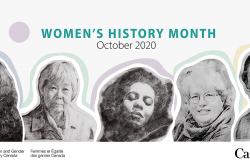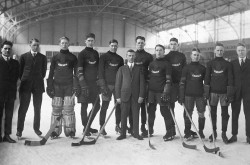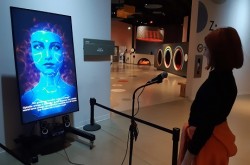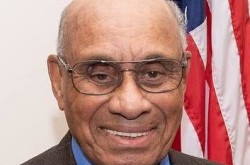Women in STEM: A conversation with Crystal McLellan

Canadian astronaut and neurologist Roberta Bondar once said, “Exploration is not something you retire from. It is a part of one’s life ethic.” That sentiment of continuity — of striving to break new ground — is critical to uphold, even as we celebrate the past achievements of women who have gone before us during Women’s History Month.
Through its Women in STEM initiative, Ingenium is telling the stories of those who dared to think differently — in an effort to foster conversations around gender equity and promote careers for women in Science, Technology, Engineering, and Math (STEM). Similarly, the Dr. Roberta Bondar Career Development Program offers an opportunity for women working in STEM to network with industry leaders and peers, and get a behind-the-scenes look at the science and tech industries in Canada.
This month, the Ingenium Channel is highlighting a series of talented, Canadian women who are participating in the Dr. Roberta Bondar Career Development Program. In today’s profile, we introduce you to Crystal McLellan, an expert in molecular biology and protein biochemistry. Her research hopes to contribute to future treatments and cures for individuals living with ALS, or Lou Gehrig’s disease.

Ingenium Channel (IC): Tell me about your work in molecular biology and protein biochemistry. Where are you working, and what is one of your current projects?
Crystal McLellan (CM): I studied these topics while completing both my undergraduate degree in medical sciences and PhD in biochemistry. In the lab, I use my expertise to determine how and why biological molecules interact so we can understand more about how living things function.
I currently work with the Robarts Research Institute at Western University as a research technician. Our group aims to understand the molecular mechanisms of Amyotrophic Lateral Sclerosis (ALS) — also known as Lou Gehrig’s disease — which is characterized by motor neuron death, resulting in muscle wasting and loss of voluntary movement. We are investigating the landscape of specific biological molecules called microRNAs in brain and spinal cord tissue from patients with ALS. We hope to see differences in the amount of these microRNAs in motor neurons responsible for eye movement in the brain, compared to motor neurons responsible for most other motor function in the spinal cord. Most people living with ALS continue to move their eyes in late stages of the disease; we want to understand how the motor neurons that control eye movement are protected, while motor neurons in the spinal cord are not. We hope this will lead to better treatments and cures for individuals living with the disease.

At the Robarts Research Institute, Crystal McLellan uses a Leica confocal microscope to look for fluorescently labelled microRNAs in ALS tissue.
IC: Is there a person who inspired or encouraged you to choose your educational path and career?
CM: In the final year of my undergraduate degree program, I undertook an independent research project and wrote a thesis presenting my work. After earning the highest grade out of my cohort in this course, my project supervisor encouraged me to pursue academic research. I decided to accept a position as lab technician in his group while considering other career prospects, such as education. During that time, my research talents were noted by faculty in the department and I became intrigued by scientific discovery. I was encouraged by faculty and my supervisor to begin a doctoral degree. I decided to follow their advice and my desire for further training; their reassurance and praise played a large part in my decision. Despite the difficulties I experienced throughout my graduate education, it was an exceptionally rewarding experience and I will always be thankful to them for their support.
IC: Is there anyone in Ingenium’s Women in STEM poster series that you find inspirational?
CM: The Ingenium poster series exploring women in STEM is an amazing production of stories and accomplishments from a very talented group of Canadian scientists. I am overwhelmed with pride to be in the same field as all these extraordinary women.
I am inspired by the work of geneticist Dr. Irene Ayako Uchida, who discovered that X-ray radiation could cause chromosomal abnormalities and birth defects using cytogenetics, and who was awarded the Order of Canada. Neuropsychologist Dr. Brenda Milner has earned many outstanding awards for research merging neuroscience and psychology, leading to discoveries in memory mechanisms in the brain. Dr. Milner is an inspiration as she still contributes to her field in her one-hundredth year! I am also envious of the ingenuity demonstrated by young women in this poster series such as Ann Makosinki, Hayley Todesco and Maayan Ziv; I look forward to following their professional journeys as they make their mark in the world.
I also want to commend the country’s women public health leaders during this COVID-19 pandemic. I understand the demand placed on them at this time, and applaud their efforts to keep us safe amidst so much uncertainty.
IC: Describe one of the challenges or biases you had to overcome on your professional journey.
CM: After graduating with my PhD, I started a family and paused my career to raise children. I was removed from the scientific community for about seven years. This time was full of amazing achievements for my family, yet every day I faced fear and doubt. The challenges of returning to research after a prolonged period — particularly without any post-doctoral experience — were intimidating. It was difficult to convince employers that I was still committed to the scientific field and still possessed competency in my skills. I was not eligible for post-doctoral competitions, and unlikely to find a post-doctoral position due to my extended period away from research. I considered leaving the STEM field entirely to simply avoid the issue; I was an overqualified candidate for many of the positions in my region and I had a large professional gap. After several months of searching I was happy to accept a research technician job at Western University, so I could prove that my skills were still sharp and stay relevant in a STEM environment.
IC: Where do you hope to go from here?
CM: I am unsure where my professional path will lead from here. I have extensive experience in an academic research environment, and can envision myself working either with my current group or another group whose interests align with mine and my skill set. If there is an opportunity for career progression in the academic setting, for example into education management, I would certainly consider that opportunity. However, I am also open to non-research career positions in the public or private sector, particularly those in STEM fields that require leadership. Because of my training, I can think critically, make independent decisions, and communicate well with people, which are valuable skills for leadership roles. With a solid foundation in science, research, and lab management, I am open to exploring fields such as public health or scientific publishing.
Wherever my professional career leads, I am grateful to this year’s Dr. Roberta Bondar Career Development Program for Women in STEM participants, organizers, and champions for their encouragement, support, and training.
IC: Do you have any words of advice for a young girl who wants to follow in your footsteps?
CM: I have a few suggestions for young girls interested in science or problem-solving and potentially a career in scientific research. Only you can determine what advice will work for your specific situation, so please take the ideas you need and leave behind those you do not.
• Evaluate your interests daily, and look at new activities or subjects to fine-tune what you love to do.
• Be proud of your achievements to grow confidence.
• Persevere through difficult times when you do not meet expectations. Share these stories with friends, parents, teachers, or mentors to learn from your experience.
• Explore and apply to scholarships, awards, volunteer opportunities, and educational groups inside and outside your school.
• Practise public speaking whenever possible, so you can communicate ideas effectively.
• Teamwork is crucial. If you need help, acknowledge others in your network who have the answers and ask for advice. Goals are achieved when none of us work alone.
• Be patient and your hard work will be recognized!































































